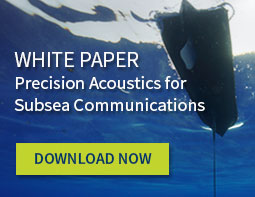AGU Ocean Sciences 2018
Liquid Robotics — February 28, 2018
Portland’s not a coastal city, so at first glance it may seem a curious choice to host the 2018 AGU/ASLO/TOS Ocean Sciences Meeting. Cold and occasionally rainy, as one would expect for the Pacific Northwest, it also certainly wasn’t peak tourist season. However, its relatively compact size with vibrant dining and social culture made it a great location for the conference. Snow-capped Mount Hood in the background and the Willamette river in the foreground provided an excellent backdrop for the attendees.
As one of the best science conferences focused on the ocean environment in the world, the 2018 rendition of the Ocean Sciences Meeting did not disappoint. There were over 3000 posters – each attended to by at least one of their authors throughout the week, along with hundreds of engaging presentations on scientific findings and methods. Covering a wide breadth of interests, from air-sea interactions and marine geology to biogeochemistry and fisheries, the amount of information conveyed at the show was nearly overwhelming.
Working for Liquid Robotics, I’m usually focused on what the Wave Glider is doing for our customers and how I can help them accomplish their missions. Conferences like this one provide a great opportunity for me to get a higher-level view of not only the scientific goals of what people are using the Wave Glider for, but also the “why” behind the work they’re doing.
At least seven posters and five presentations at the event contained data collected using Wave Gliders, including one presentation by Liquid Robotics’ own engineering team. Applications included:
- Upper ocean mixing process in the Southern Ocean
- Salinity measurements after Hurricane Harvey in the Gulf of Mexico
- Locating and measuring fish spawn aggregations acoustically in the Caribbean
- Long duration salinity measurements in the Pacific Ocean
- Air-sea measurements in the Southern Ocean
- Ocean acidification measurements in the Gulf of Mexico
- Phytoplankton measurements in the Pacific Ocean
- Coordinated robotic systems working autonomously
With all of these notable scientists presenting their work, one might wonder why a commercial entity like Liquid Robotics would submit their own paper to present. And indeed, we were one of the few companies there in a scientific role, presenting our own research and results. While we were not the most scientifically rigorous presentation at the conference, it was still useful to show that behind the scenes we continue to allocate resources toward improving the scientific quality of measurements that the Wave Glider collects. It also demonstrates our ongoing commitment to the science community.
Overall, the 2018 Ocean Sciences Meeting was a huge success and it was great to learn about the amazing work that the scientific community is doing, both in general and with the Wave Glider specifically. I look forward to attending the next one in San Diego in 2020.
Ryan Carlon is the Science & Research lead at Liquid Robotics. If you have question about whether a Wave Glider can help you with an upcoming research project, he’s here to help.
